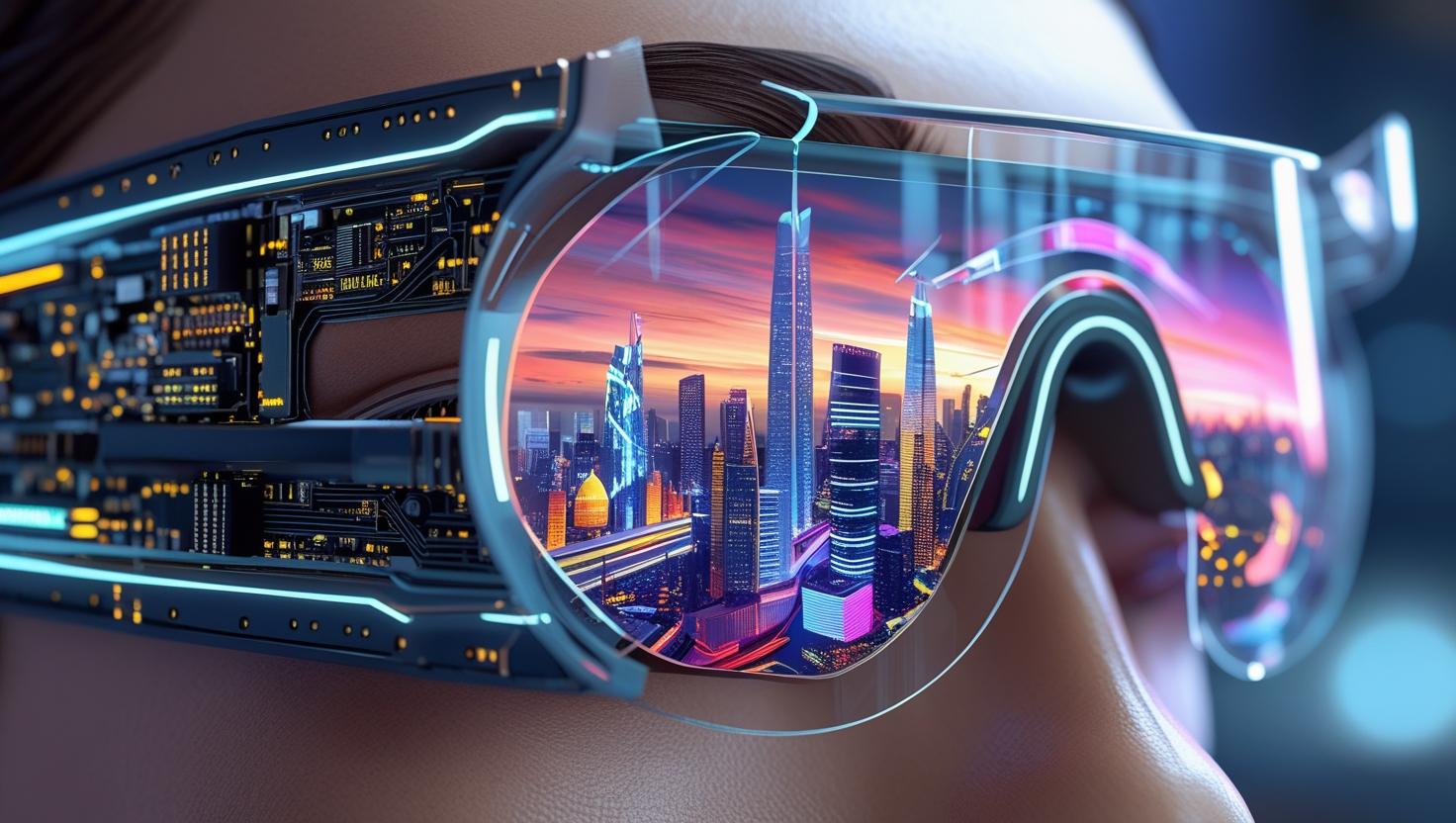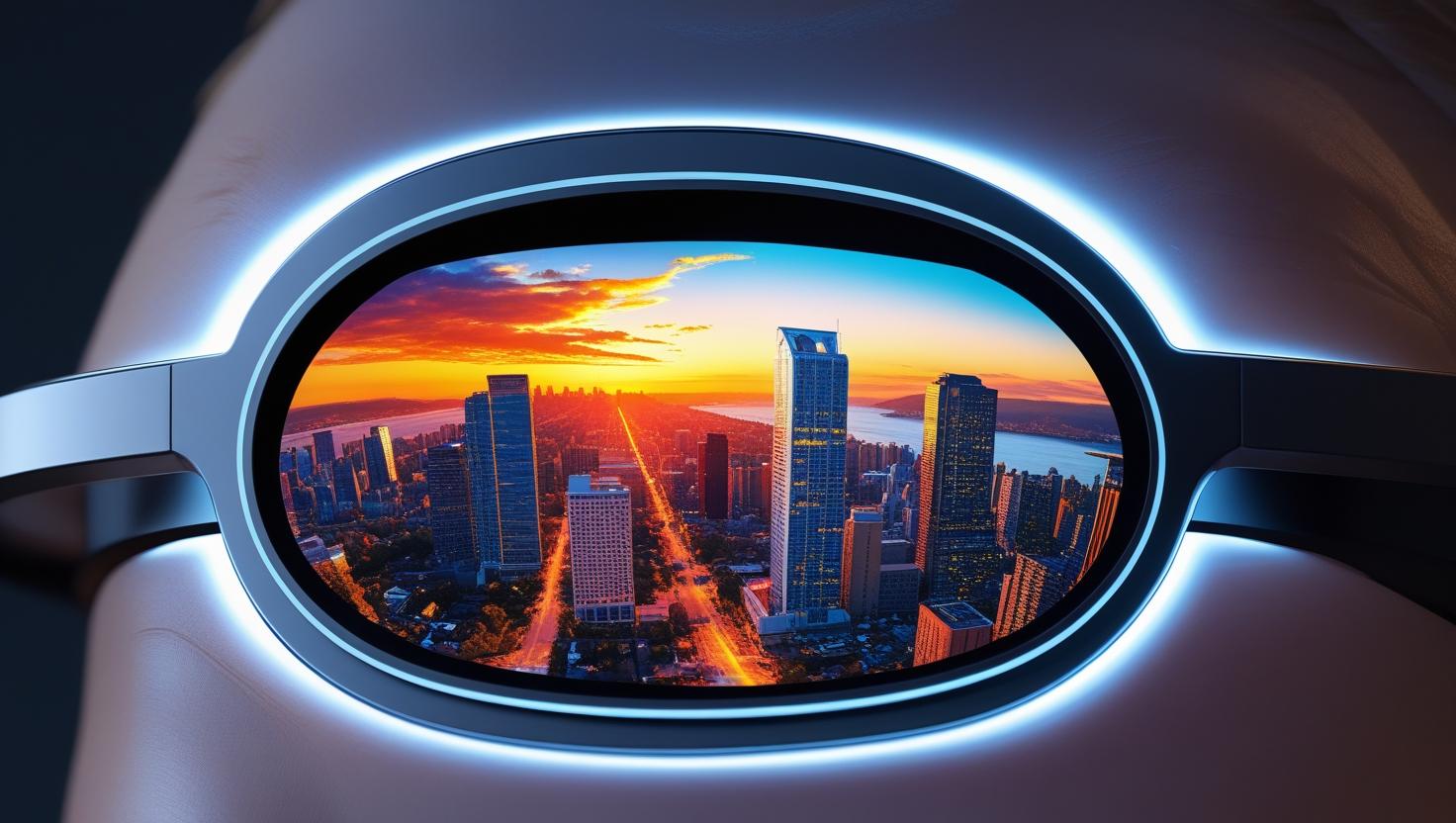The future of near-eye display industry is poised to redefine how humans interact with digital environments. As immersive technologies like augmented reality (AR), virtual reality (VR), and mixed reality (MR) gain momentum, near-eye displays are becoming central to delivering seamless visual experiences. These compact, high-resolution screens, positioned close to the eyes, are integral to headsets, smart glasses, and other wearable devices. The rapid evolution of this industry is driven by advancements in optics, display resolution, and user interface design, all of which are shaping a transformative era for personal and professional applications. With the future of near-eye display industry at the forefront of technological innovation, this article delves into its growth drivers, emerging trends, and long-term potential.

Technological Advancements Shaping the Future of Near-Eye Display Industry
The future of near-eye display industry hinges on groundbreaking technological developments. Innovations in micro-LED and OLED technologies are enhancing display quality, offering vibrant colors, high contrast, and energy efficiency. Micro-LED, in particular, is gaining traction due to its ability to deliver pixel-level precision in compact form factors, making it ideal for AR and VR headsets. Additionally, advancements in waveguide optics and holographic displays are improving field-of-view (FOV) and reducing device bulkiness, addressing longstanding challenges in user comfort. These technological strides are not only elevating the visual fidelity of near-eye displays but also expanding their applicability across sectors like gaming, healthcare, and education. As research and development accelerate, the future of near-eye display industry will likely see even more sophisticated solutions, enabling immersive experiences that blur the line between physical and digital realities.
Market Growth and Economic Impact in the Future of Near-Eye Display Industry
The economic potential of the future of near-eye display industry is substantial, with market projections indicating robust growth. The gaming and entertainment sectors remain key contributors, but industries like manufacturing, retail, and telemedicine are also embracing near-eye displays for training, remote collaboration, and customer engagement. The rise of the metaverse—a virtual shared space powered by immersive technologies—further amplifies demand, positioning the future of near-eye display industry as a cornerstone of digital transformation. Investments from tech giants like Apple, Meta, and Microsoft underscore the industry’s strategic importance, signaling a competitive landscape that will fuel innovation and affordability in the years ahead.
The near-eye display market is projected to grow from USD 2.17 billion in 2025 to USD 6.65 billion in 2030, at a CAGR of 25.1%.
Emerging Trends Defining the Future of Near-Eye Display Industry
Several trends are shaping the trajectory of the future of near-eye display industry. One prominent trend is the shift toward lightweight, stylish designs that prioritize user comfort and aesthetics. Smart glasses, for instance, are evolving from bulky prototypes to sleek, everyday wearables, broadening their appeal beyond niche markets. Another trend is the integration of artificial intelligence (AI) to enhance user interactions, enabling features like real-time object recognition, gesture control, and personalized content delivery. Additionally, the adoption of 5G connectivity is improving data transfer speeds, reducing latency, and enabling seamless cloud-based rendering for AR and VR applications. These trends collectively underscore the dynamic nature of the future of near-eye display industry, as it adapts to evolving consumer expectations and technological possibilities.
Download PDF Brochure for More Info @ https://www.marketsandmarkets.com/pdfdownloadNew.asp?id=204073371
Applications Across Diverse Sectors in the Future of Near-Eye Display Industry
The versatility of near-eye displays is a key factor in the future of near-eye display industry. In healthcare, AR headsets are revolutionizing surgical procedures by overlaying critical data, such as 3D organ models, directly into a surgeon’s field of vision. In education, VR headsets are creating immersive learning environments, allowing students to explore historical events or scientific concepts interactively. The retail sector is leveraging AR glasses to offer virtual try-ons and personalized shopping experiences, while the automotive industry uses near-eye displays for heads-up displays (HUDs) that enhance driver safety. These diverse applications highlight the transformative potential of the future of near-eye display industry, as it empowers industries to innovate and improve efficiency in unprecedented ways.
Challenges and Opportunities in the Future of Near-Eye Display Industry
Despite its promise, the future of near-eye display industry faces several challenges. High production costs and complex manufacturing processes for advanced displays like micro-LED can limit scalability and affordability. Additionally, concerns about user health, such as eye strain and motion sickness, remain significant hurdles, necessitating ongoing research into ergonomic designs and safety standards. However, these challenges also present opportunities. For instance, breakthroughs in cost-effective manufacturing could democratize access to near-eye displays, while innovations in user-centric design could enhance adoption rates. The future of near-eye display industry will depend on balancing these challenges with strategic investments in research, development, and consumer education to build trust and drive widespread acceptance.
The Role of Consumer Adoption in the Future of Near-Eye Display Industry
Consumer adoption is a critical driver of the future of near-eye display industry. As devices become more affordable and user-friendly, mainstream acceptance is growing, particularly among younger demographics accustomed to digital interfaces. The gaming community, in particular, has embraced VR headsets for immersive gameplay, while professionals are adopting AR glasses for remote collaboration and training. However, achieving mass adoption requires addressing barriers such as price sensitivity and skepticism about the technology’s value. Marketing campaigns that highlight practical use cases, coupled with competitive pricing strategies, will be essential to expanding the consumer base. The future of near-eye display industry will increasingly rely on creating compelling, accessible experiences that resonate with diverse audiences.
Sustainability and Ethical Considerations in the Future of Near-Eye Display Industry
Sustainability is an emerging focus in the future of near-eye display industry. The production of near-eye displays involves resource-intensive processes, raising concerns about environmental impact. Manufacturers are exploring eco-friendly materials and energy-efficient technologies to reduce their carbon footprint. Additionally, ethical considerations, such as data privacy and security in AR and VR devices, are gaining attention. As these devices collect sensitive user data, ensuring robust privacy protections is critical to maintaining consumer trust. The future of near-eye display industry will need to prioritize sustainable practices and ethical frameworks to align with global demands for responsible innovation.

Competitive Landscape and Key Players in the Future of Near-Eye Display Industry
The future of near-eye display industry is characterized by intense competition among established tech giants and innovative startups. Companies like Meta, with its Quest series, and Apple, with its anticipated AR glasses, are leading the charge in consumer-focused devices. Meanwhile, firms like Magic Leap and Microsoft are targeting enterprise applications with advanced mixed reality solutions. Startups such as Nreal and Varjo are also making waves by offering specialized products that cater to niche markets. This competitive landscape fosters rapid innovation, as companies vie to deliver superior performance, affordability, and user experience. The future of near-eye display industry will be shaped by these players’ ability to differentiate their offerings and capture market share.
Global Perspectives on the Future of Near-Eye Display Industry
The future of near-eye display industry varies across regions, reflecting differences in technological infrastructure and consumer preferences. North America and Asia-Pacific are leading markets, driven by strong investments in R&D and high consumer demand for immersive technologies. In contrast, adoption in Europe is growing steadily, with a focus on industrial and professional applications. Emerging markets in Latin America and Africa present untapped potential, though challenges like affordability and connectivity must be addressed. The global expansion of 5G networks and declining device costs are expected to accelerate adoption worldwide, positioning the future of near-eye display industry as a truly global phenomenon.
Long-Term Vision for the Future of Near-Eye Display Industry
Looking ahead, the future of near-eye display industry holds immense promise. As technologies mature, near-eye displays could become as ubiquitous as smartphones, seamlessly integrating into daily life. The convergence of AR, VR, and AI may give rise to entirely new forms of communication, entertainment, and productivity. For instance, fully immersive virtual workspaces could replace traditional offices, while AR-enhanced education could democratize access to learning. The future of near-eye display industry will likely be defined by its ability to create meaningful, human-centric experiences that enhance rather than replace real-world interactions.
Embracing the Future of Near-Eye Display Industry
The future of near-eye display industry is a tapestry of innovation, opportunity, and transformation. From technological breakthroughs to diverse applications, this industry is set to reshape how we perceive and interact with the world. While challenges remain, the collective efforts of manufacturers, researchers, and policymakers will pave the way for a vibrant, sustainable future. As we stand on the cusp of this technological revolution, the future of near-eye display industry invites us to imagine a world where digital and physical realities converge in harmony, unlocking endless possibilities for human creativity and connection.
FAQs
What is the future of near-eye display industry?
The future of near-eye display industry involves advancements in AR, VR, and mixed reality technologies, with applications in gaming, healthcare, education, and more, driven by innovations in micro-LED, AI, and 5G connectivity.
How will near-eye displays impact daily life?
Near-eye displays will enhance daily life by enabling immersive entertainment, remote collaboration, interactive education, and personalized shopping experiences, making digital interactions more seamless and intuitive.
What are the challenges facing the future of near-eye display industry?
Challenges include high production costs, user health concerns like eye strain, and data privacy issues, which require ongoing research and ethical considerations to ensure widespread adoption.
Which companies are leading the future of near-eye display industry?
Tech giants like Apple, Meta, and Microsoft, along with startups like Nreal and Varjo, are driving innovation in the future of near-eye display industry with consumer and enterprise-focused solutions.
How does sustainability play a role in the future of near-eye display industry?
Sustainability is critical, with manufacturers exploring eco-friendly materials and energy-efficient technologies to reduce environmental impact and align with global demands for responsible innovation.
